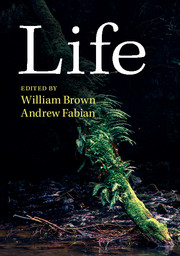Book contents
- Frontmatter
- Contents
- List of figures
- List of tables
- Notes on contributors
- Preface and acknowledgements
- 1 Life and death of a cell
- 2 The spark of life
- 3 From genomes to the diversity of life
- 4 Artificial life
- 5 Life in conflict: soldier, surgeon, photographer, fly*
- 6 Life in the ancient world*
- 7 Life in ruins*
- 8 The after-life*
- Index
- References
6 - Life in the ancient world*
Published online by Cambridge University Press: 05 September 2014
- Frontmatter
- Contents
- List of figures
- List of tables
- Notes on contributors
- Preface and acknowledgements
- 1 Life and death of a cell
- 2 The spark of life
- 3 From genomes to the diversity of life
- 4 Artificial life
- 5 Life in conflict: soldier, surgeon, photographer, fly*
- 6 Life in the ancient world*
- 7 Life in ruins*
- 8 The after-life*
- Index
- References
Summary
Only the future is uncertain, the past is always changing.
AnonymousNot everything is quite as it seems
The year 2012 is – as it is becoming increasingly difficult to forget – an Olympic year. The Olympics have a long history, as we are often told, which stretches back to the world of ancient Greece. This link between ancient and modern was trumpeted again during 2012, not least at an exhibition entitled ‘The Olympic Journey’ at the Royal Albert Hall, which told the story of the Olympics from ancient Greece to the present day.
And yet, just what picture of the ancient games, and thus the links with our modern Olympics, do we have in our heads? A quick quiz highlights the issues. Which of the following did form part of the ancient Olympics?
(a) the Olympic torch relay
(b) the Marathon race
(c) male athletes tying up their penises with string
Only the last is true of the ancient games. The torch relay was introduced by Hitler at the 1936 Berlin Games, and the Marathon race first became part of the Olympics in 1896, at the inaugural modern games. Athletes tying up their penises with string, on the other hand, known as ‘infibulation’, ‘ligaturing’ or by its ancient name kynodesme (‘dog-tying’), was a well-known feature of ancient athletics. Its purpose is, however, unclear, with some scholars arguing that it was meant to help avoid unwanted erections, others simply to keep the penis out of the way when running, others that it was an issue of sexual attraction and others still an issue of modesty.
- Type
- Chapter
- Information
- Life , pp. 96 - 123Publisher: Cambridge University PressPrint publication year: 2014



